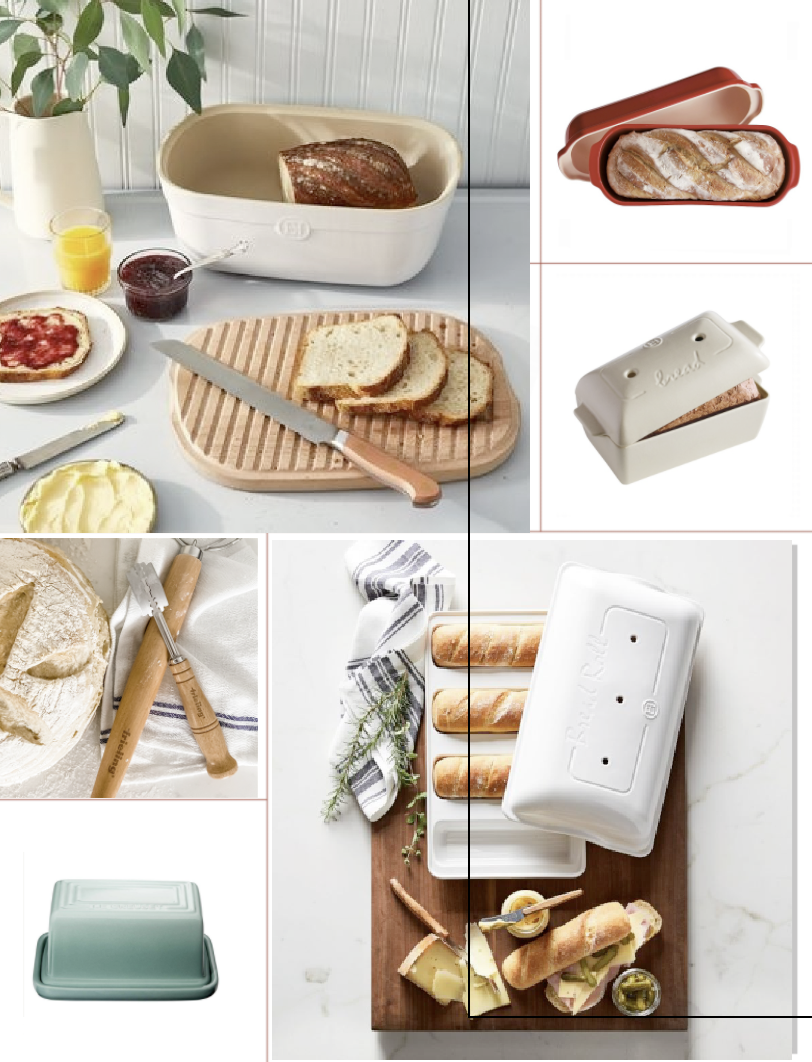
Master the art of baking artisanal bread at home with these beautiful tools of the trade!
We reached out to one of our talented instagram followers to see if she would write a feature on baking bread at home using our Emile Henry Round Bread Baker from Bradshaws. Here is her post!
Recipe and images by Courtney Klumper @clklumper
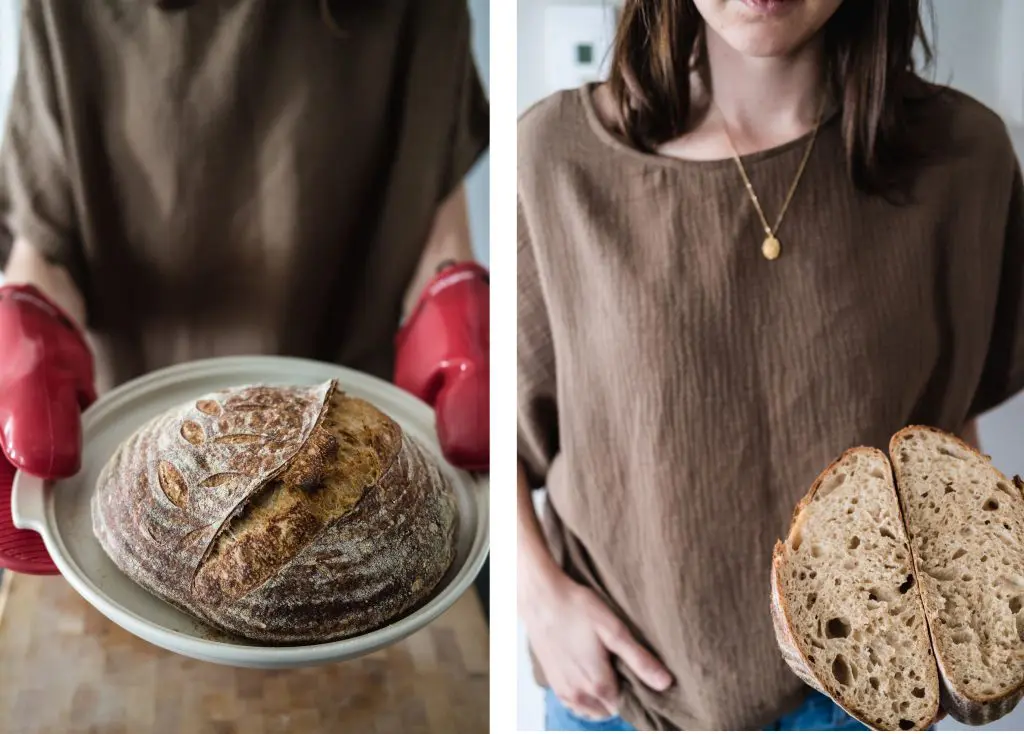
30% Whole Wheat Sourdough Boule
INGREDIENTS
351 g water (26 C)
90 g levain* (100% hydration)
135 g organic whole grain flour
315 g organic hard white flour
9 g kosher salt
Makes 1 boule
*Levain, or levain starter, is a leavening agent made from a mixture of flour and water and used to bake bread.
The flour and water mixture takes on the wild yeasts in the air, and ferments.
TOOLS
Medium bowl
Digital scale
Mixing spoon
Dish cloth
Bench knife
8” banneton
Lame (razor to cut the dough)
Emile Henry Round Bread Baker (or enameled Dutch oven)
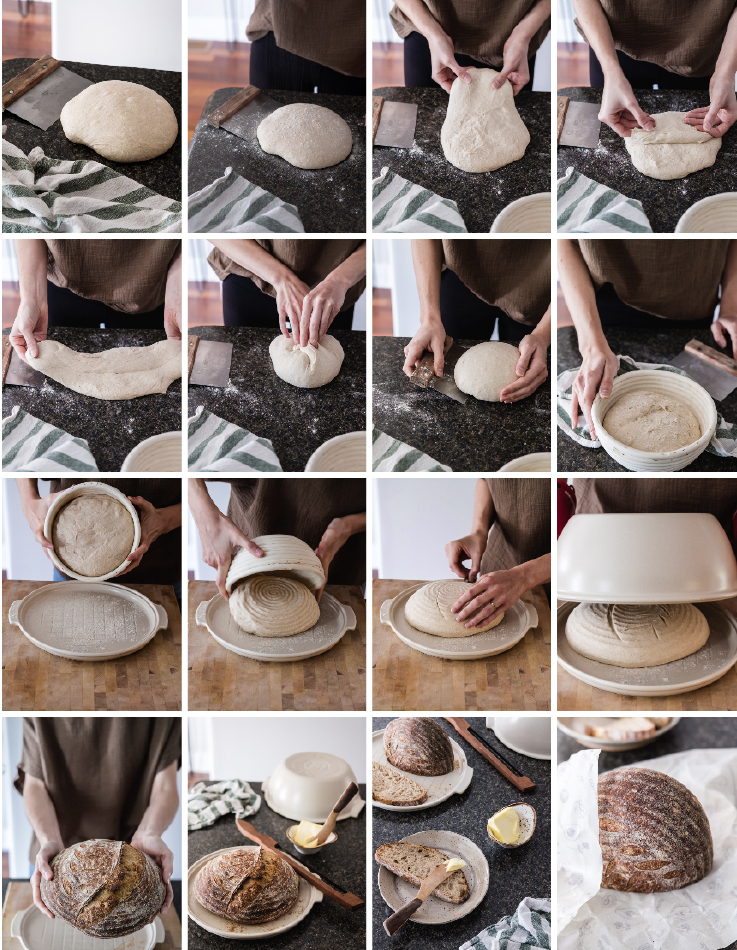
RECIPE
7:45 am: Mix.
Mix water and levain in a medium bowl until fairly dissolved. Add flour and mix until there are no dry spots. You’re not trying to develop any gluten at this point, just to hydrate the flours and incorporate the levain.
8:15 am: Salt + bulk fermentation begins.
Add the salt, squeezing it into the dough to incorporate evenly. Hand mix the dough for about five minutes, or until showing signs that it’s started to develop (dough has become a cohesive mass and is beginning to smooth out). Cover with a dish towel.
8:45 am:
Perform the first stretch and fold — this is what’s going to develop the gluten, because the dough is too wet for traditional kneading. Gently lift one side of the dough up towards you, then fold it onto itself back in the bowl. Do this three more times until you’ve made your way around the bowl. (Think: North, East, South, West.)
9:15 am:
Another stretch and fold. Handle the dough more gently with each future stretch and fold.
9:45 am:
Another stretch and fold.
10:15 am:
Another stretch and fold. By this time the dough should have smoothed out considerably and be holding its shape fairly well in the bowl.
11:45 am: Pre-shape.
The dough should have risen considerably (if your kitchen is cold, you can place your bowl in a turned-off oven with the light on at the beginning of bulk fermentation), appearing aerated and lively. Using a wet hand or bowl scraper, gently guide the dough onto an unfloured counter. Use your bench scraper along the counter to pull the dough towards you, creating surface tension and rounding out the dough. Only do this a few times so you don’t degas the dough.
12:00 pm: Shape and proof.
Lightly flour the counter and the top of the dough. Use your bench scraper to flip the dough — flour side down — onto the floured section of the counter and gently stretch the dough in each direction. Fold the bottom half of the dough up onto itself, then repeat with the right and left sides, making sure the dough sticks to itself to form a seal. Fold the top over all the way to the bottom, then gently flip the dough over to seal it. Generously flour your banneton with rice flour to prevent sticking, then use your bench knife to flip the dough into the banneton, seam side up.
Cover with a towel and proof at room temperature.
1:15 pm: Refrigerate.
The dough should have risen slightly and jiggle a bit. Place the banneton inside a resealable and reusable bag to keep it from drying out, then place in the fridge overnight. This slows down the fermentation and develops the flavour.
The next morning:
Place the Emile Henry Round Bread Baker inside your oven and preheat to 425F convection (450 regular). When the oven is preheated, remove the dough from the fridge. Remove the Emile Henry round baker from the oven and remove the lid. Lightly flour the base, then gently flip the dough onto it. Use the lame (or a sharp knife) to cut slashes into the dough. These allow steam to escape and encourage the bread to rise
without bursting at the crust. Cover with the lid, then place into the oven for 20 minutes. After 20 minutes, remove the lid and continue baking for another 25 minutes or until a deep, golden brown. Remove to a cooling rack.
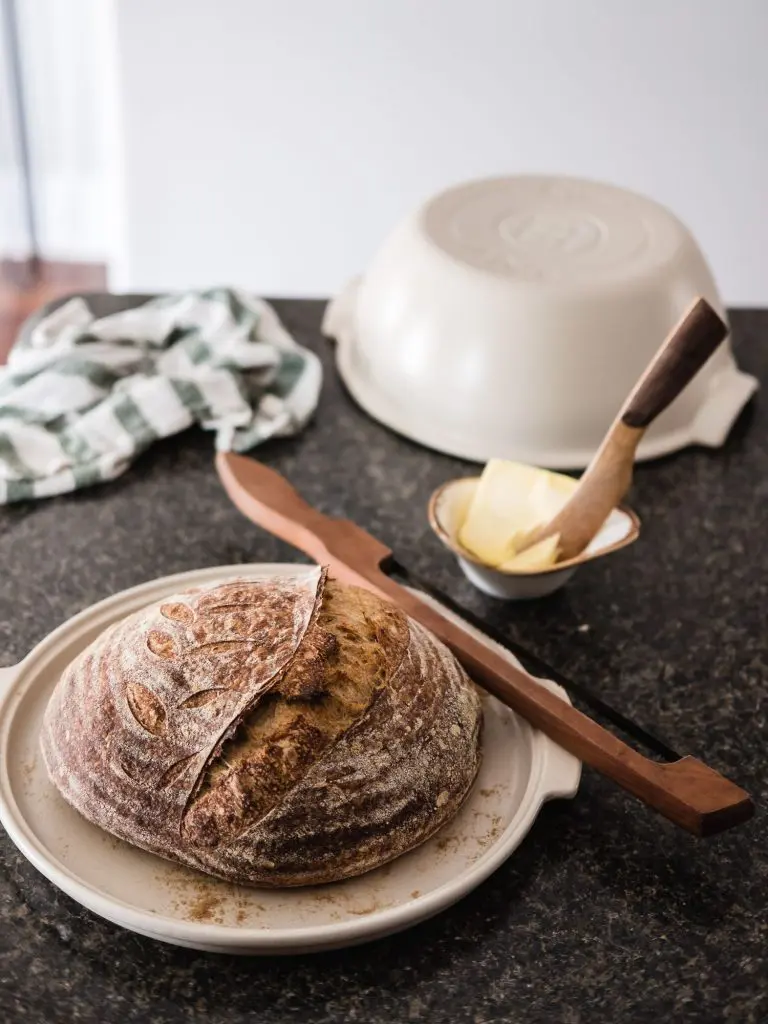
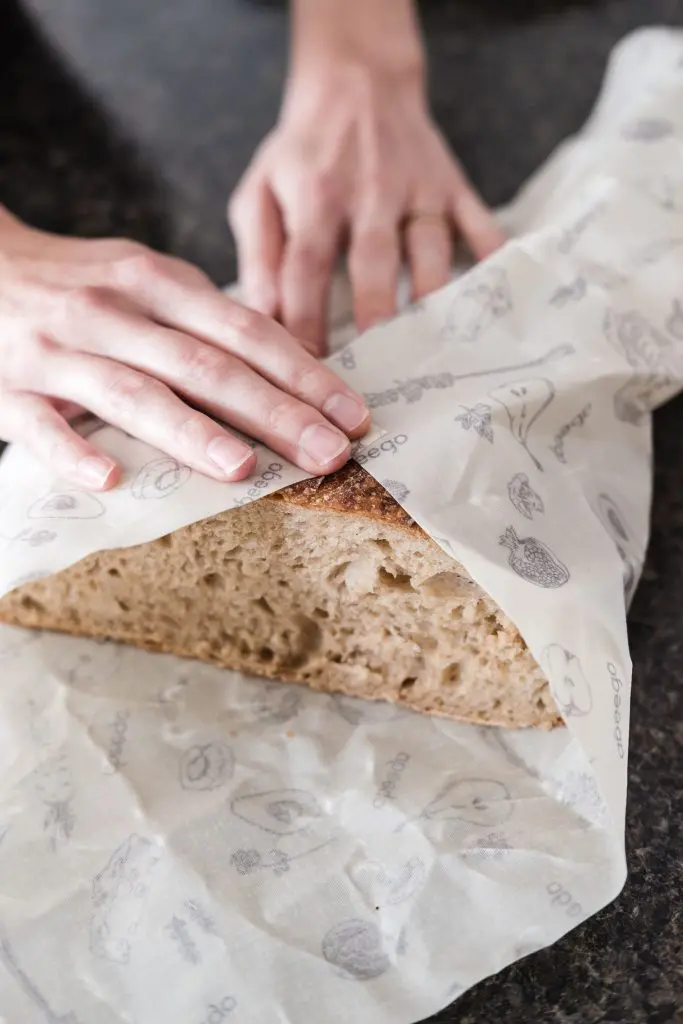
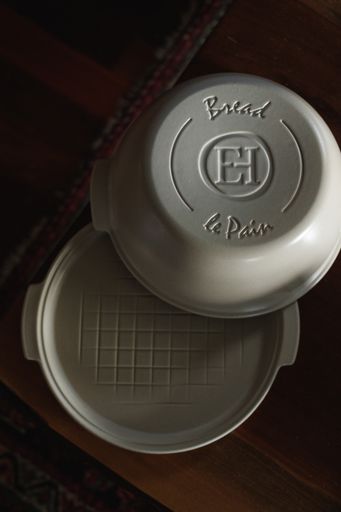
Thank you Courtney for this amazing step-by step on how-to make the perfect boule! You have inspired us to continue to work on our bread making skills!
Share this post